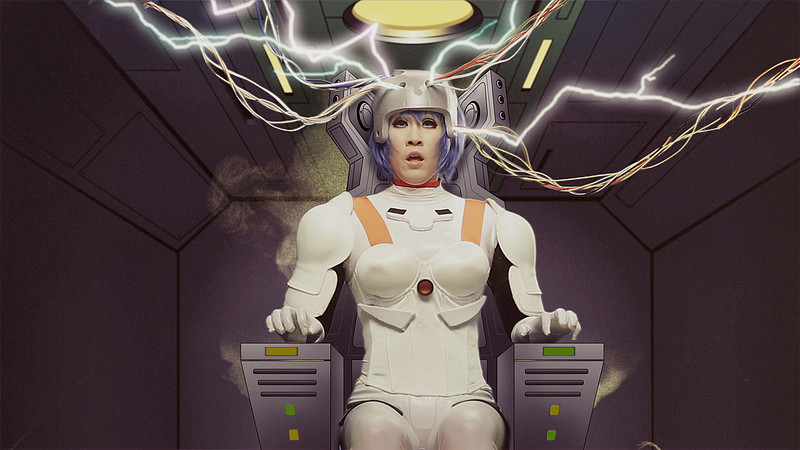Ming Wong
19 Jun - 02 Aug 2015
MING WONG
Me in Me
RAY 2015
19 June - 2 August 2015
In Me in Me, Ming Wong portrays three recurring archetypes of Japanese cinema culture. He himself adopts the role of the geisha in formalistic Kabuki style, as that of a traditional housewife from postwar neorealism, as well as playing a contemporary science-fiction anime character. In each of these roles, the female protagonist is searching for fulfillment and belonging in a misplaced patriarchal context, defining her ideas of self, and discovering her will to survive. In addition to the different scenes and change of roles, Wong shows us the complete set, with moments out of character and insights into the construction of the various scenes.
The foundation and transformation of identity form the central themes of Ming Wong’s work.Wong tracks down phenomena such as alienation, global imagery, and stereotypes, bringing them to the foreground through film, photography, and installations. Having grown up in exile in Singapore, this artist of Chinese descent plays the three Japanese female roles with an elegant sense of humor and self-deprecation. His physiognomy dictates that he is imitating these women, though in spite of his gender, he identifies with them; and with that, his work remains not just formally at the level of a making-of feature, but rather allows the processes of transformation, appropriation, and a true representation of reality to shine. In this way, the initial concept of RAY FOTOGRAFIEPROJEKTE IMAGINE REALITY is connected to Wongs work, going beyond mere questions of media.
Me in Me
RAY 2015
19 June - 2 August 2015
In Me in Me, Ming Wong portrays three recurring archetypes of Japanese cinema culture. He himself adopts the role of the geisha in formalistic Kabuki style, as that of a traditional housewife from postwar neorealism, as well as playing a contemporary science-fiction anime character. In each of these roles, the female protagonist is searching for fulfillment and belonging in a misplaced patriarchal context, defining her ideas of self, and discovering her will to survive. In addition to the different scenes and change of roles, Wong shows us the complete set, with moments out of character and insights into the construction of the various scenes.
The foundation and transformation of identity form the central themes of Ming Wong’s work.Wong tracks down phenomena such as alienation, global imagery, and stereotypes, bringing them to the foreground through film, photography, and installations. Having grown up in exile in Singapore, this artist of Chinese descent plays the three Japanese female roles with an elegant sense of humor and self-deprecation. His physiognomy dictates that he is imitating these women, though in spite of his gender, he identifies with them; and with that, his work remains not just formally at the level of a making-of feature, but rather allows the processes of transformation, appropriation, and a true representation of reality to shine. In this way, the initial concept of RAY FOTOGRAFIEPROJEKTE IMAGINE REALITY is connected to Wongs work, going beyond mere questions of media.

